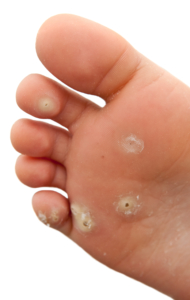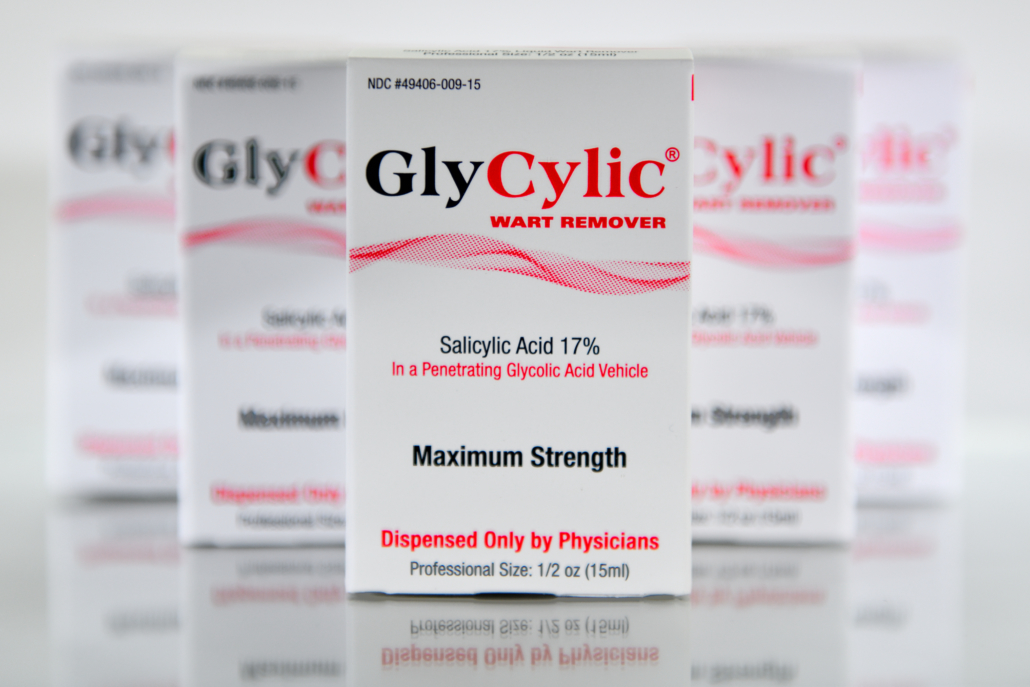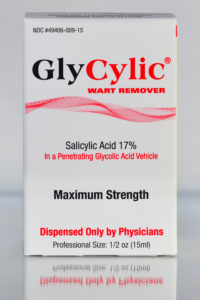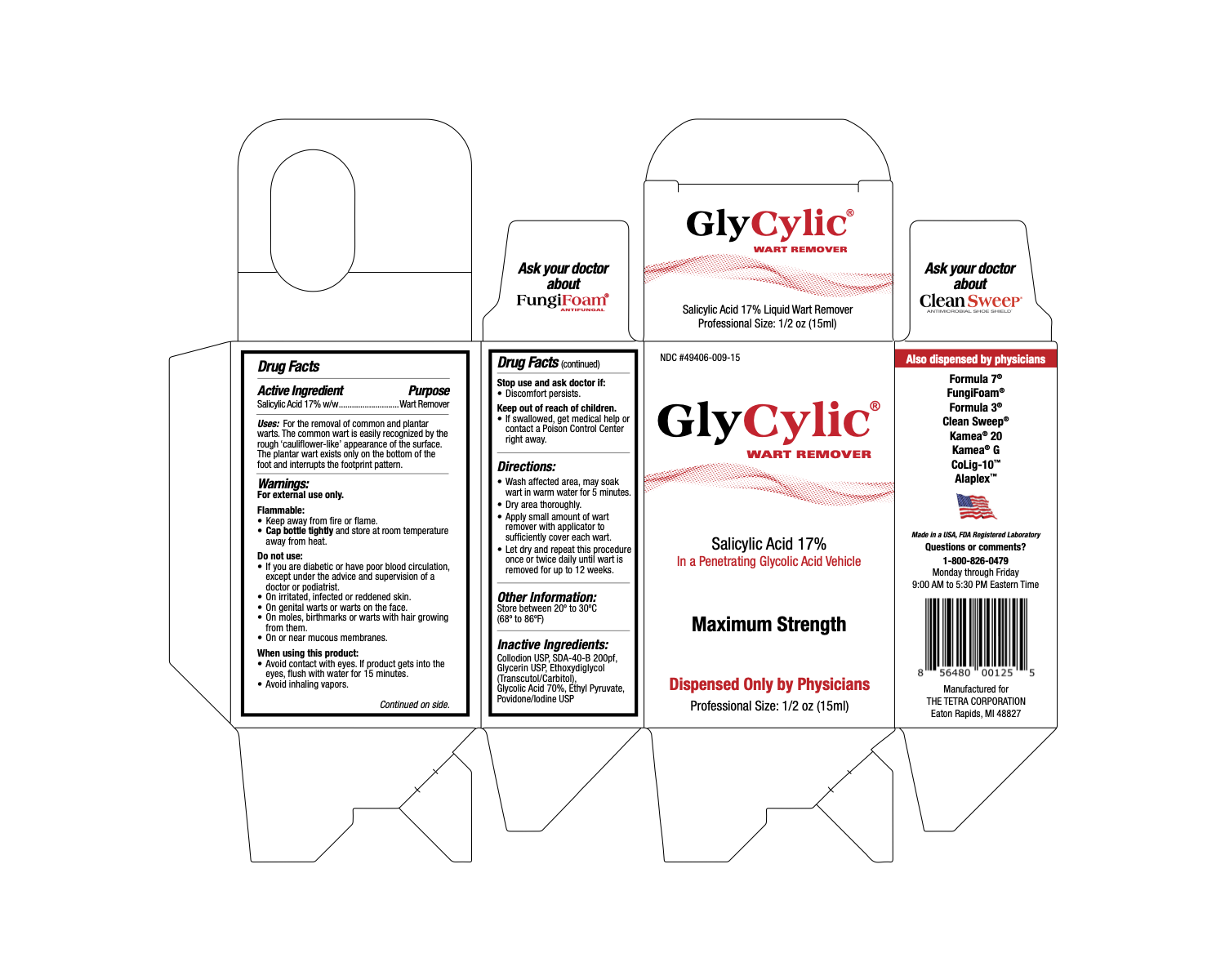Painless Penetration
Why Does GlyCylic® Work So Well?
GlyCylic®’s vehicle (glycolic acid) works to break the bonds between the outer layers of the wart, including dead skin cells, and open pathways for the Salicylic Acid to achieve deep penetration.
The GlyCylic® Advantage.
GlyCylic® – is the first wart remover formulated with salicylic acid (a beta-hydroxy acid), glycolic acid (an alpha-hydroxyl acid), and immunomodulatory, virucidal, anti-scarring, and antiseptic ingredients that condition the emerging skin and promote healing while minimizing swelling, irritation, inflammation, and scarring. The anti-viral kills the HPV virus and the immunomodulatory triggers an immune response to clear the virus and prevent reoccurrence.
Glycolic Acid – Glycolic acid is the acid with the greatest ability to penetrate the hard thick skin covering the outermost layers of a wart. Think of it as the “tip of a knife”.
Salicylic Acid – Salicylic Acid follows the Glycolic Acid into the wart to achieve deep penetration. Salicylic acid causes the skin to swell, soften, and then peel off.
Glycerin – Glycerin traps moisture in your skin and contributes to the penetration and peeling-off of the top layers of the wart. It also moisturizes the emerging skin.
Ethyl Pyruvate – Ethyl pyruvate has profound anti-inflammatory and immunomodulatory properties. Ethyl Pyruvate acts to minimize inflammation as wart layers are peeled off.
Povidone/Iodine – Povidone-iodine provides rapid, potent, and a particularly broad spectrum of antimicrobial activity that includes Gram-positive and Gram-negative bacteria, bacterial spores, fungi, protozoa, and viruses. Povidone-iodine has many characteristics that position it extraordinarily well for wart healing, including its broad antimicrobial spectrum, lack of resistance, efficacy against biofilms, good tolerability, and its effect on excessive inflammation. It has also been demonstrated in clinical trials that burn victims treated with povidone-iodine do not develop scars.
What You Need To Know About Warts.
Plantar Warts are benign (noncancerous) skin growths caused by the human papillomavirus (HPV). The type primarily associated with plantar warts is HPV-1. Less common culprits include HPV types 2, 4, 60, and 63, among others. The virus, acquired through cracks in the skin, causes a thickening of the outer layer of skin. Warts affect 7-10% of the population, and young people are more commonly affected.
Most plantar warts can be treated at home if they are small and non-intrusive. However, you should always see a doctor if a wart is bleeding, affecting how you walk, is changing in texture or appearance, or is worsening despite treatment. This is especially true if you have diabetes since even a small wart can trigger extreme neuropathic pain or lead to a diabetic foot infection.
Transmission
Warts are transmitted by direct contact or indirect contact (e.g., public showers, swimming pool areas, hotel room bathrooms). Picking or scratching at warts can increase the risk of spreading or transmission to another person.
Nail biting, cuticle picking, and shaving also can predispose you to develop warts. Trauma may play a role in the development of warts because they often occur at pressure points – for example, on the bottom of the foot.
Types of warts
Each type of wart is caused by a slightly different virus, and treatment may vary. The common forms include the following:
- Common warts (verruca vulgaris) are flesh-colored, small, raised spots on the skin with a rough surface. The size of the wart varies and may appear anywhere on the skin, particularly on the elbows, knees, hands, fingers, and around the nails. The black dots found in these warts, often called seeds, are superficial blood vessels and not actual seeds.
- Plantar warts (verruca plantaris) are no different than common warts except that their location on the bottom of the foot may result in a flat appearance from being pressed into the foot by the weight of the person. Plantar warts may occur singly or in a pattern, grouped closely together. They may cause pain, redness, and swelling.
- Flat warts(verruca plana) have a smaller, smoother surface than common warts. They may appear in great numbers on the face and also may occur elsewhere, particularly on the arms and legs.
- Periungual and subungual. These warts form under or around fingernails and toenails.
Self-care
You can use GlyCylic® Wart Remover to treat warts, except genital warts, at home. Apply GlyCylic® (available at your doctor’s office) according to package directions.
Prevention
- Remove warts that are present.
- Do not pick at warts. It could spread them.
- Wear footwear in public showers and other public areas to avoid plantar warts.
When should I see a doctor?
- If the warts are painful or change in appearance or color
- If you have tried treating them without success and they persist, spread or come back
- You are unsure if the growth is a wart
- The wart is in a place on your body that it interferes with your normal activities






